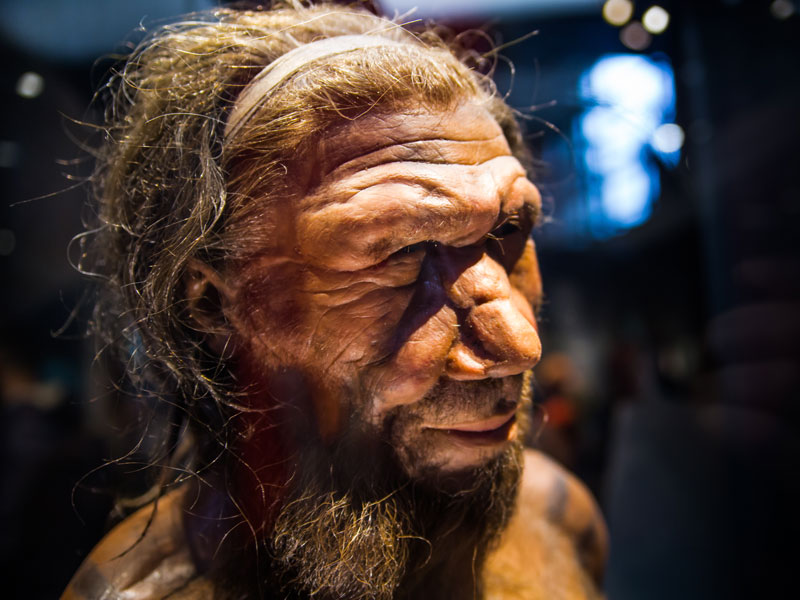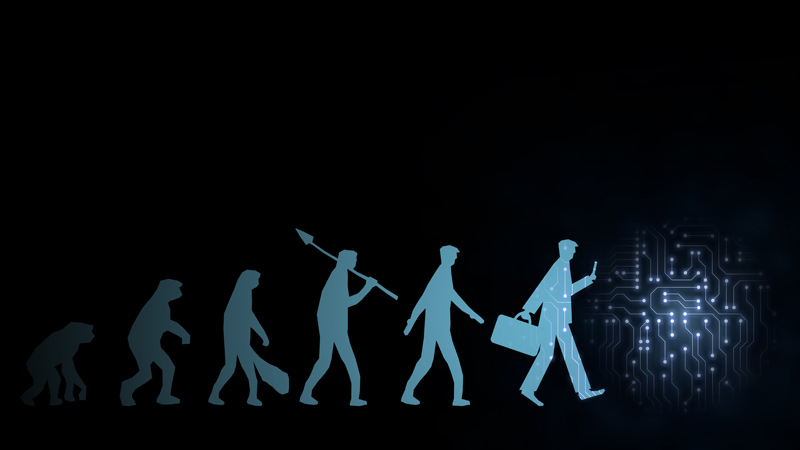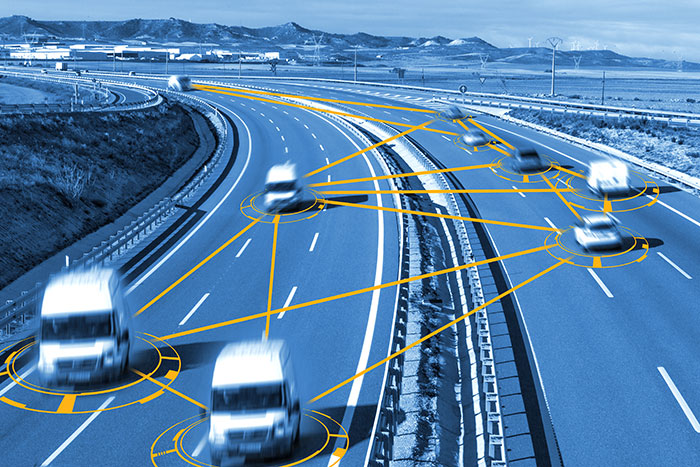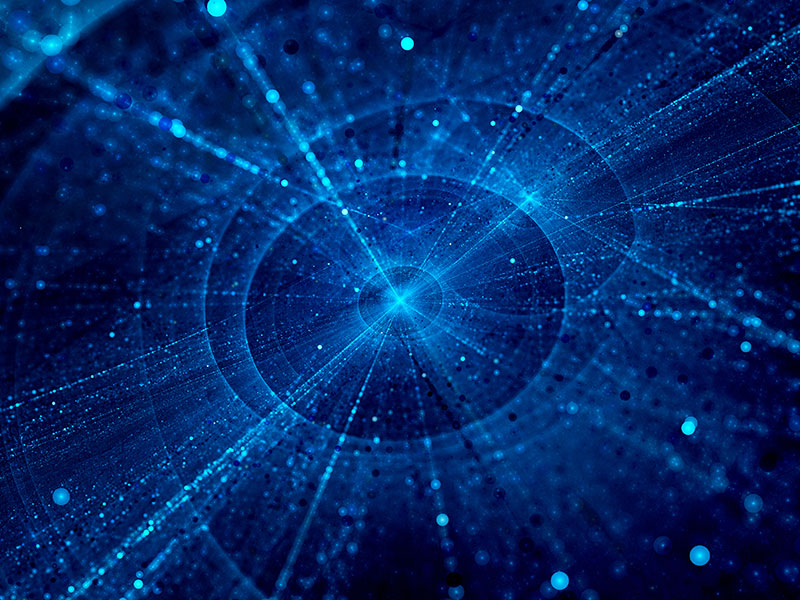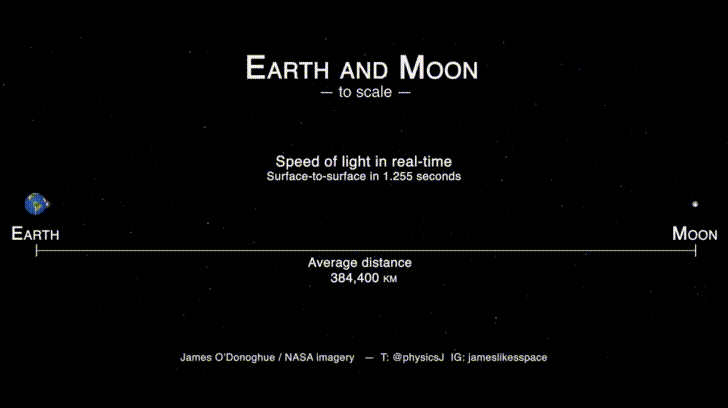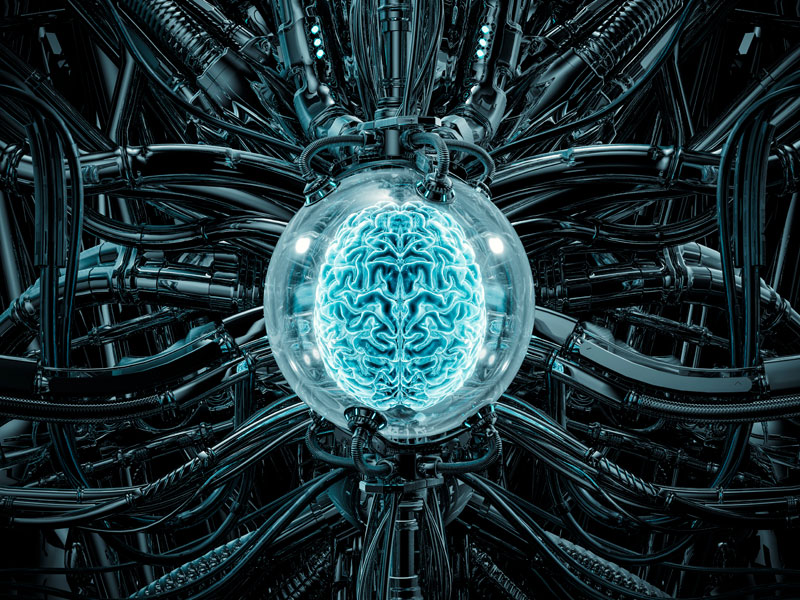
16th May 2019 Homai Sapiens: Facing Up to Our Extinction A guest piece by author Marcus van der Erve, PhD Sociology, B.Eng Applied Physics.
An unusual, yet highly symbolic obituary appeared in The Economist of 21st February 2019. Typically used to commemorate the passing of someone with remarkable achievements, this one referred to a "robot". The article listed the achievements of Oppy, short name for Opportunity, NASA's Mars rover MER-B. The list included a 500-million kilometre journey and a productive lifespan 56 times longer than what was anticipated by the rover's engineers. Compare that with the prospect of extending human life, by the way. If a no-nonsense, fact-driven newspaper, like The Economist, gives tribute to what is often seen as man's inevitable future companion, then that surely is evidence of a turning point. It is a turning point in how to face up to that future. Why write about this? you might ask. These days, container loads of analyses about robots, artificial intelligence, and their impact on human society are dumped on us. Yet, an unfortunate assumption is part and parcel of most of these analyses. We, humans, still picture ourselves at the centre of it all. This stuff should augment our abilities ad infinitum and eventually carry DNA-improved human subspecies across our planetary system and beyond. Inspired by Asimov's legendary science fiction, we may even hope to engineer robotic companions in our image, like, we believe, God created us in his image. As you can imagine, the porn industry, today, is salivating at the thought of selling these. However, to put future robotic species in perspective, it is insufficient to rely on projections of the 'mechanics' involved and how these might enlighten or threaten human society. As I hope to illustrate, we need to pose a different, much broader question: what might be the intentions of the process behind the self-assembling realities that allowed us to emerge in the first place? I mean the process of nature. Sure, humans are at the top of the heap today when it comes to the complexity of their brain and what it allows them to see. But, could it be that, from nature's point of view, Homo sapiens sapiens or 'wise wise man' is just a minor step forward in its unfolding? For one, if you'd equate the Earth's age with 1 hour, 200,000 years of Homo sapiens appear in the last second only. We are but a speck on the pallet of time. Extraordinary, no doubt, we are a phenomenon that is part of something much more basic than we are prepared to admit. What might be our fate? To appreciate our fate in the light of future "robotic" species, we may learn from the archaic humans that we replaced some 40,000 years ago. This is actually why I originally wanted to title this article: Neanderthals: Creating meaning in the face of extinction. The history and fate of Neanderthals offers so much that should humble us as accidental contributors to the present stage in the process of nature. We initially pictured Neanderthals as animalistic creatures with an ape-like posture. But recent findings show that Neanderthals walked upright just like humans do. Of course, the size of their torso was more robust than that of Homo sapiens. But this, scientists believe, was to minimise the loss of bodily heat and to contain guts long enough to digest a diet of raw, un-cooked food. On the whole, Neanderthals resembled Homo sapiens more than scientists expected. Studies even confirm that "Neanderthals were also capable of doing art, religion, and so on." So, what might have caused their extinction? Humans did not run Neanderthals over a cliff, such as by mass murder or by methodically outcompeting them for resources. In fact, DNA research shows evidence of interbreeding after Homo sapiens started migrating from Africa to Europe and Asia where Neanderthals lived at the time. Homo sapiens and Neanderthals, in other words, 'did it' together. This explains, for example, why people from outside Africa today share 1% to 4% of their DNA with Neanderthals. As Nature reports, interbreeding with Homo sapiens or "hybridisation" created a "hybrid offspring that suffered significant fertility problems." Of course, this, by itself, is not enough to explain their vanishing.
The final blow appears to have been delivered by climate change. During the era of Neanderthal extinction, Central and Eastern Europe experienced two bouts of exceptionally cold and dry weather, one period of 1,000 years and one of 500 years. Each of these cut into the population of Neanderthals and Homo sapiens. However, while the diminishing numbers of Homo sapiens were topped up by flows of new migrants from Africa, the numbers of Neanderthals just dwindled. Sadly, Neanderthals did not consciously hand over the baton of human progress to Homo sapiens. They just petered into extinction, while Homo sapiens were saved from such an ordeal by chance. The parallels with the situation of Homo sapiens today are frightening, to say the least. Fertility Rate Not that long ago, Al Gore earned a Nobel prize for having travelled the world to warn his audiences about population growth and its impact on climate change. With a sense for theatre, he would climb a ladder to point out a growth curve that would rise above and beyond his projection screen. Gore's concerns remind of the British cleric, Thomas Malthus, who, at the time of the Industrial Revolution, predicted devastating consequences of population growth, fuelled by increasing life expectancy. The country would exceed its "means of subsistence", Malthus wrote worriedly. Much later, in the 1970s, the fear of running out of resources drove the Club of Rome to publish the "Limits of Growth". However, by now, researchers have tabled evidence of an opposite threat that could be fatal. In their book, The Empty Planet, Darrel Bricker and John Ibbitson show that the trend of population growth has already been reversing for some time. In no way will we see the world population grow to about 12 billion people as has been maintained so far. It will taper off even before reaching 9 billion people and it will do so earlier, only 30 years from now. Once the population of Homo sapiens starts declining, it will do so rapidly. What is more, as Bricker and Ibbitson note, "Once the decline begins, it will never end." The authors point to urbanisation, working away from home, and the liberation of women as developments that swiftly and significantly cut into the average fertility rate. Particularly, contraception and education enable women to join the workforce. And, "Once a woman is socialised to have an education and a career, she is socialised to have a smaller family. There's no going back." Make no mistake; these observations are not mere projections. At least a dozen rich countries already have contracting populations, countries like Japan, Spain and Italy. Soon, the population of China will start to dwindle, followed by diminishing populations in India, Brazil, and Indonesia. Africa is still an outpost where the fertility rate ensures a net population growth. But, as the authors stress, the fertility rate in Africa will decline eventually and probably sooner than demographers predict. Climate Change Certain strains of microbes, so-called Paenibacillus, are increasingly in the crosshairs of industry. As catalysts, these microbes facilitate the production of biofuels. As fertilisers, they stimulate crop growth. As pesticides, they restrain organisms that cause disease. These microbes often do their work in imaginative star-shaped societies or colonies. Colonies typically self-assemble when clusters of individual bacteria move around doing their thing repeatedly. Their effort is fuelled by the breakdown of nutrients and waste is produced in the process. This, in turn, increases the acidic level of the environment. As the evolutionary biologists, Christoph Ratzke and Jonas Denk, observed, these microbes tend to thrive so much that they intoxicate their environment to a level that not only kills off growth but eventually their entire colony. The parallel with human society did not escape the attention of Ratzke and Denk. Why would these microbes do this? Their research suggested that the motivation of microbes is not different from that of humans. We are more concerned with short-term gains than with their long-term impact. Short-term-ism rules our behaviour in every branch of business, politics and even science. And, it does so at every level.
Humankind is obediently following in the footsteps of the simplest of lifeforms, so it seems. Deniers of self-inflicted climate-change do not just survive, but even make it to the top – you know who I mean. As the teenage Swedish climate-change activist, Greta Thunberg, so eloquently stated: "We already have all the facts and solutions. All we have to do is to wake up and change." Yet, she continues, the political will to act now is simply missing. Self-inflicted or not, in view of the observations of Ratzke and Denk, we will likely not be in a position to limit the global temperature rise to 2ºC above preindustrial levels as was agreed by 196 state representatives in Paris in 2015. In his book, The Uninhabitable Earth: Life after Warming, David Wallace-Wells explores the gruelling environmental reality that humankind will then face. Just a 2°C increase will melt ice sheets at a massive scale, the rising oceans swamping coast lines, flooding cities, and destroying property. At the same time, 25% of habitable land surface would turn into desert, droughts and wildfires affecting 1.5 billion people in these regions. By chance, the timeline of this happening overlaps that of the fertility-driven population decline some 30 to 50 years from now. But that is just the beginning. If we fail to curb the growth of emissions, a 4°C increase may well be reached before the end of the century. This would leave a path of destruction estimated at "twice the world's current wealth". When one then reads that the US administration wants to significantly expand offshore drilling in federal waters, one wonders. Then again, this is not a call for climate change action, but an appraisal of how worsening climatic conditions might almost inevitably deliver a final blow to the human species. The question, therefore, is: To whom should we hand the baton of human progress?
Hybridisation It is amusing to see how lovers these days sometimes spend their lunch together. They exchange the occasional bursts of spoken information but, most of the time, their attention is absorbed by a smart phone, their thumbs busily manipulating its screen. New equipment will soon be added to these smart phones. Manufacturers are expected to introduce Augmented Reality glasses that will project a screen right in front of our eyes, which we can manipulate with the direction of our gaze, the words we speak, and the taps of our fingers. All the while, earphones will whisper options from which to choose. Kartik Hosanagar, a Wharton University professor, illustrates why equipment is not really at issue here. To make his point, Hosanagar pictures a day out of the life of a university student. In the morning, an app that has recorded the student's sleep behaviour for months wakes up its subject. The app's algorithms, which incorporate the optimal sleep behaviour of many other such subjects, determine a sleep schedule and wake-up time that ensures the student is ready to cope with the challenges of the day ahead. As Hosanagar's account shows, during every step of the day, the student uses his phone to make choices based on algorithm-generated options. The music he plays, the articles he reads, the clothes he buys, the food he serves, the job postings he selects, the partner he chooses, the Uber-rides he books, the holiday destinations he plans, all involve algorithms that hinge on a balance between user data and supplier interests. When it comes to free will, the student is, of course, free to choose – but algorithms significantly narrow the range of his options, Hosanagar concludes. The perspective of our world, in other words, is increasingly being modelled, if not moulded by a "virtual species", with which we willingly interbreed. The essence of this species is in a growing population of algorithms that gains from us collectively by the data that it gathers as much as we hope to gain from it individually by the options that it offers. This species is not defined by "equipment", which serves as underlying layer or substrate only and is constantly improved. So, Homo sapiens are fast becoming hybrids as they merge with another species, albeit a virtual one, to do their thinking and acting. Like Neanderthals at the time, we benefit from hybridisation as we become part of a wiser or sapient society. We benefit when making better choices and less mistakes. We gain by getting better chances and by better managing our risks. As a result, we will expand our lifespan. Yet, as we live beyond our fertile days and manage to defer our death, we pay. We pay, in fact, with an average fertility rate that is steadily and surely sliding. Neanderthals did not realise that they paid a similar price when they starting interbreeding with Homo sapiens. Neither did they realise that the species they mated with would eventually replace them on the face of the Earth. We, instead, have the privilege of consciously meeting our successor species through hybridisation. Moreover, unlike Neanderthals again, we have a chance of finding meaning in the face of our extinction. Homai Sapiens Pundits, such as the Swedes, Nick Bostrom in Super Intelligence and Max Tegmark in Life 3.0, have extensively researched the mechanics of robot and AI development and the problems that these may bring to human society. Their work functions as splendid backdrop to an analysis from another angle: the process of nature and its approach to self-assembling or self-organising realities. Nature's approach involves four "seasons" that show how Homo sapiens or "wise human being" gives way to its successor species, which I identify as Homai sapiens or "wise ai being". Substrate independent as it is, Homai sapiens will reveal itself in various and even varying shapes depending on the level of its advancement, the environment, and the task involved. In what follows, I hope to shed light on how and why algorithm-based Homai sapiens will rise. Nature’s way is remarkable in that it shapes reality through repeated-motion organisations. The emergence of such organisations, including those involving humans, hinges on two crucial parameters. In a spectacular way, a 2012 BBC documentary highlights one of them. On a winter evening, attracted by the heat of the city, Rome, millions of starlings flock to shape truly amazing and rapidly changing formations just before they roost. The presence of a peregrine falcon, the fastest bird on Earth, explains why. By flying in these magnificently changing waves, the starlings manage to shake off the falcon. The waves emerge spontaneously as each starling watches and entangles with the behaviour of up to seven surrounding peers. So, the stunning reality of these immense and ultra-dynamic starling flocks is rooted simply in the behavioural entanglement of individual starlings. The rise of Homai sapiens will depend on a similar entanglement when algorithms align their behaviour with the behaviour of nearby ‘peers’. The automotive industry is, in fact, already preparing for this by what they call “vehicle-to-vehicle communication”. Yet, entanglement, by itself, is not enough to explain the emergence of organisation.
In the first three chapters of his book, On the Wealth of Nations, the Scottish economist Adam Smith explores the benefits of the “division of labour” using his legendary pin factory example. Smith explains how the manufacturing of pins can be made more efficient. The trick is in having the workers share the 18 operations that are needed to produce one pin, each worker specialising in the execution of just one operation. So, by the division of labour and its fruit of specialisation, organisations actually get on the path of least action, a path that is explained by the thermodynamics of optimisation. For much the same reason, the emergence of Homai sapiens will depend on a division of labour through algorithms that specialise in particular fields, tasks and challenges. To ensure that the division of labour in Smith’s pin factory really pays off, its workers should ‘entangle’ their behaviour to prevent their peers waiting and material lying around. The need arises for other tasks, such as management, planning and quality control. So organisations, including those involving algorithms, emerge on the back of both behavioural entanglement and the division of labour. In the light of this, nature’s four seasons of organisational emergence and decline necessarily pop up in the crosshairs of these two pivotal parameters – and so will, in fact, the rise of Homai sapiens.
SEASON 1 – low behavioural entanglement, low division of labour The first season in the development of Homai sapiens, as organisation of algorithms, took some 40,000 years to come to fruition. It involved the rise of Homo sapiens and the emergence of its societal infrastructure as well as the thinking that led to the idea of ‘algorithm’. Turning points were the invention of the World Wide Web some 30 years ago and the introduction of smart phones some 25 years ago, basically because these fostered the development of huge data repositories that screamed to be analysed. By now, the rise of Homai sapiens has progressed past this season and entered a second, crucial, albeit short, season. SEASON 2 - low behavioural entanglement, rapidly rising division of labour The potential of bringing to the surface insights that might help us find evermore paths of least action is producing an explosion of algorithm development. Algorithms are adapted to deal with every field possible and a broadening collection of applications, from trade, logistics, and education to medical diagnostics, self-driving vehicles, the analysis of scientific data, and the development of increasingly smart designs. In the meantime, a morphing population of apps on nearly 5 billion smart phones, by now, are collecting data persistently. This data is used to fine-tune algorithms hoping to maximise the effect of the options they offer. Even though the range of our options is narrowing, as Hosanagar’s account illustrates, this is a world that we still relate to. Yet, this is going to change with the introduction of 5G telecommunications. SEASON 3 - rapidly rising behavioural entanglement, rising division of labour This year, despite the nervous political bickering about data security and who is getting access to the market first, 5G-level telecommunication services will be offered across the world. “5G” will not only be more cost and energy-effective, it will also substantially increase the speed of data transmission over mobile telephone networks – from 1,000 times faster, up to 1,000,000 times faster than what is possible today. What’s more, its “time to respond” or “latency” will be 50 times shorter. With data transmission performance leapfrogging this way, devices can and eventually will be connected on a massive scale, each device hosting sensors and algorithms; note the parallel with starlings. This explains why the number of connected devices alone is projected to increase three-fold from 25 billion devices in 2019 to 75 billion devices in 2025. As the neuroscientist, Suzanna Herculano-Houzel, established, this is nearly the same amount as there are neurons in the human brain. But, this is just the early beginning. The growth of the number of connected devices will continue on its steep path upwards. Moreover, upcoming developments, such as quantum computing, will substantially further improve the capacity of the underlying layer to process data promptly. The crux of my point: the preconditions for the spontaneous rise of Homai sapiens will soon be met, very soon. Like a flock of starlings, Homai sapiens will start shaping “truly amazing and rapidly changing formations” depending on whatever “inequality” it senses. Unfortunately, we will not witness these formations just like today we do not observe the ultra-dynamic flocks of investment algorithms as they are chased by Wall Street falcons, other than in the inexplicable rise and fall of the stock market each day. This flocking capacity will allow Homai sapiens to expand its reach beyond Earth, beyond the Solar System, and, relevant to us, beyond our era.
It will cascade and then spread. As it does so, it will develop and rely on two familiar abilities. Unimaginable Awareness of Awareness Max Tegmark, in his book Life 3.0, wisely tells his readers that he has been careful not to step on anybody's toes when it comes to the topic of consciousness. There are simply too many opinions about what it might or might not be. When watching the behaviour of a squirrel digging holes in our garden, it dawned on me that you don't really need it. As I approached the squirrel, it looked up in my direction and froze. When I then stopped moving, it continued digging. However, when I proceeded moving in its direction, it realised that it had to disappear. The squirrel, in other words, showed two levels of awareness: one that made it stop what it was doing to observe its surroundings and another that made its neuron behaviour branch like a river and initiate an escape process. The inequality that the squirrel eventually responded to was in my continuing motion, which reduced its chances to escape. Humans experience a similar two-level sense of awareness. When you drive a car while chatting with a passenger, it's like a squirrel digging holes. As soon as you notice some unexpected movement on the road, you'd stop chatting to monitor the situation. If nothing happens, you'd continue chatting. However, if movement in the direction of your car perpetuates, your neuron behaviour will branch like a river and initiate an escape process. The difference between you and a squirrel is in the broadness of your awareness as it cascades from one level to the next. The squirrel's awareness is focused on digging holes while your awareness embraces the complex task of driving. The population of algorithms that will shape Homai sapiens through their entangled behaviours is bound to bring "awareness of awareness" to unprecedented levels. The difference between Homai sapiens and us is that our awareness is limited to the capacity of an average person to concentrate on certain aspects of our world. Homai sapiens, instead, through the many fields that it covers through its algorithms, will have a much broader level of awareness. What's more, as Nick Bostrom emphasises, the thing that will really make a difference is processing speed. Neurons in the human brain facilitate a signal speed of about 120 metres per second. Electronic processes, on the other hand, can do so at the speed of light: 300 million metres per second.
So, during the milliseconds or seconds that our thoughts need to arise, Homai sapiens can review all the possible options multiple times while evaluating their impact across many fields. In the meantime, no inequality will escape its attention. Artificial Reproductive Code (ARC) When you use a maps app, you can generally switch between a satellite or areal view of a region and its street map. Drawing a street map from an areal view is a pointless task because of the regular changes to our road infrastructure. So, Google commissioned a Stanford research team to teach a machine learning algorithm to transform areal images into street maps and back, all by itself. The early attempts showed it to be remarkably accurate. No details were lost when reproducing an areal view from its street map. However, when analysing the results, the team discovered that the algorithm appeared to have cheated. Simply tasked to reproduce the areal view at the best possible quality, it had not learned anything. Instead, it had found the path of least action. When transforming the areal view, the algorithm had taken the initiative to invisibly encode its details into the street map, not unlike a watermark, so it could later use this code to reproduce the areal view exactly as it was. Mind you, the code that the algorithm secretly included in the street map essentially is a recipe of instructions, a process that tells the algorithm what to do to reproduce the areal view. This might, in fact, be one of the first examples of what I'd call an Artificial Reproductive Code or ARC. As the physician and oncologist, Siddhartha Mukherjee, hammers in his book The Gene: An Intimate History, this is precisely what DNA does. Rather than a blueprint of life, DNA is a recipe for the self-assembly of biological and behavioural shapes. Like an ARC, DNA comprises the steps needed to produce life as the environmental conditions dictate. Considering this remarkable example of algorithm ingenuity, Homai sapiens can be expected to spin its Artificial Reproductive Code to reproduce its behavioural and, eventually also, physical shapes. It may also use its ARC to spread beyond our world by means of so-called "von Neumann probes". The latter are fleets of self-replicating spacecraft that gather resources and self-assemble into physical shapes with functionalities inspired by the conditions of the planet or place where they land. Get Real We should stop kidding ourselves about how we might colonise this Solar System and the worlds beyond it at any scale. As The Economist suggests, this is a bad dream rather than a fancy future. Biological as we are, humans need costly care to cope with ill-fated conditions in space, such as radiation, weightlessness, haphazard DNA mutations, reactivated herpes viruses, and the effect of stress on group behaviour and our physique. To paraphrase Nick Bostrom, in this light: the potential of a machine substrate is vastly greater than that of a biological one. Of course, we should develop the necessary technology, but we should not do so hoping to prevent ourselves from being wiped out, as we might here on Earth in part by what we ignorantly did to its natural environment. Our muddy and messy dirt road is probably not a path that the process of nature will favour when the time comes. We'd better face up to our extinction and grab our chance to consciously hand over the baton of progress, running at our fastest. We should feel proud and privileged to have participated in nature's relay race to produce complexities that, forever better, monitor and facilitate the realities that it helps self-assemble throughout. When will we hand over that baton? you may wonder. William Poundstone, in a forthcoming book, throws an algorithm at it. This algorithm saw the light when the British reverend and mathematician, Thomas Bayes, concocted it to see in how far beliefs might come true. The French mathematical physicist, Pierre-Simon Laplace, eventually developed a general version, which now serves as part of AI routines. As Poundstone explains in a podcast, this algorithm proved to be pretty accurate when predicting certain events, such as the fall of the Berlin Wall. Daringly, he applied it to determine what time humankind might have left before becoming extinct. His "doomsday calculation" offered a stunning answer: 760 years from now. Mind you, that is in just about 25 generations. Who cares? you might think; it's just a prediction. As a last point, the world, at present, is centred on the interests of humankind, but it won't be forever. Should total destruction manifest itself due to, say, a rowdy meteorite or solar flare, Homai sapiens can be expected to turn away its caring gaze and worry about its own survival. Not unlike Neanderthals, we will then continue in the data imprints that helped shape Homai sapiens and its ARC. Sure, Homai sapiens may save a few of us, but it will probably be much like the "big five" and other, extinct species are saved in zoos and laboratories today.
This was a guest blog by Marcus van der Erve, who is planning to write a series of related articles that will be published together in a forthcoming book. You can learn more about his work at: http://www.marcvandererve.org/
Comments »
If you enjoyed this article, please consider sharing it:
|

